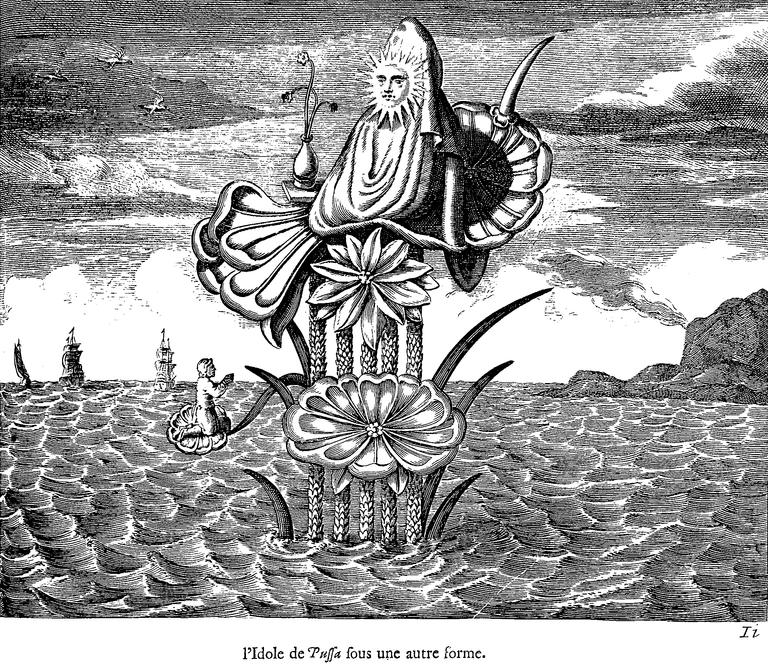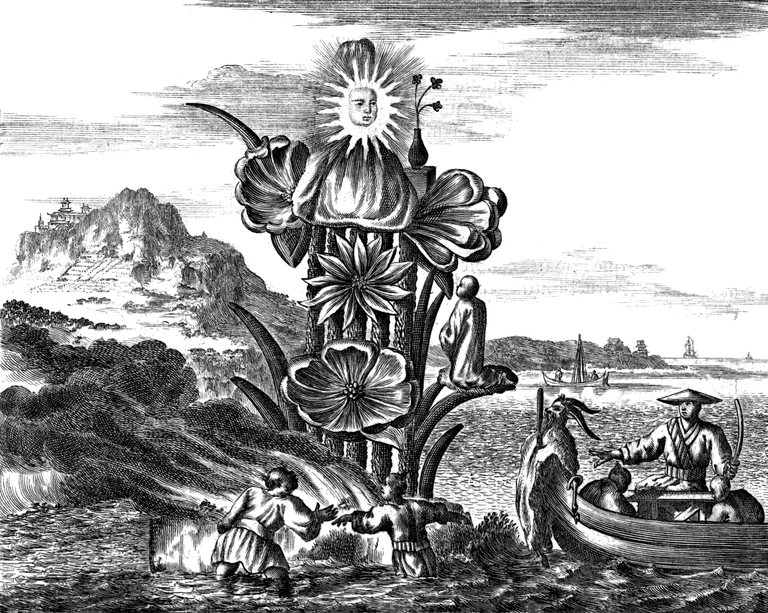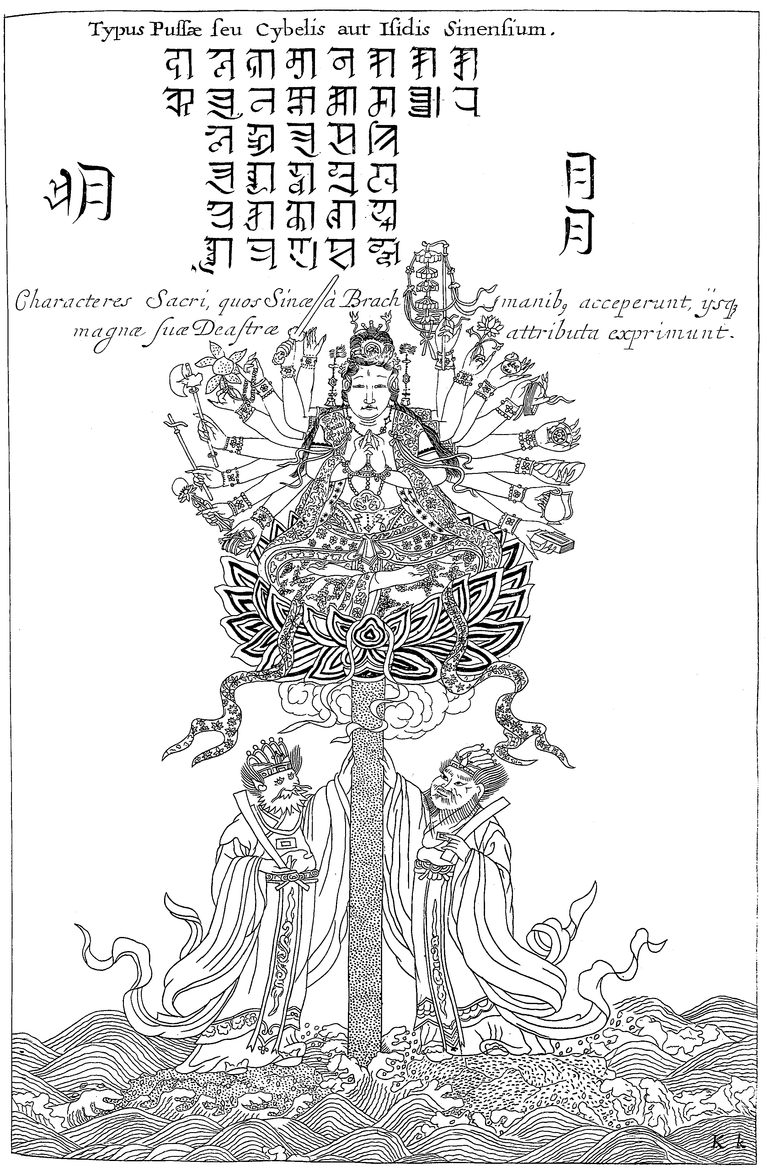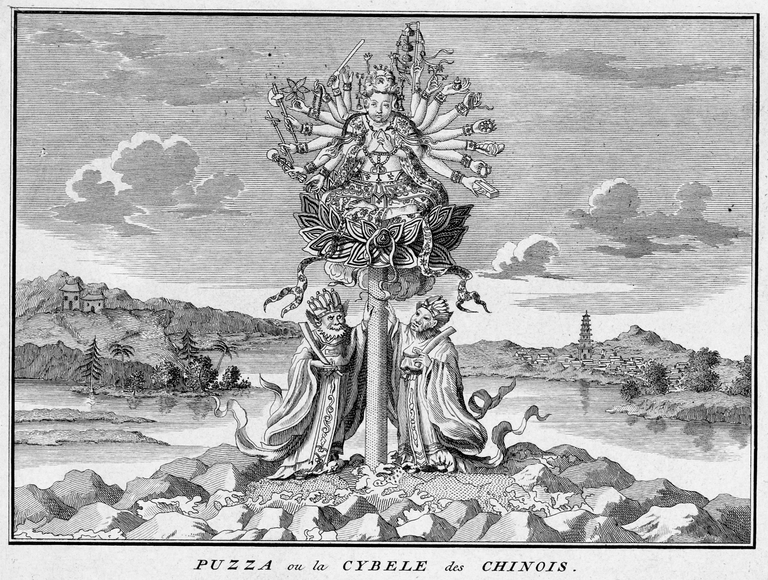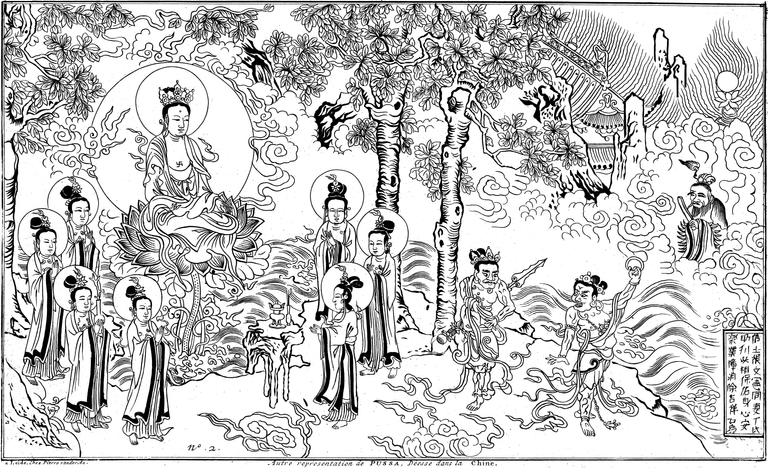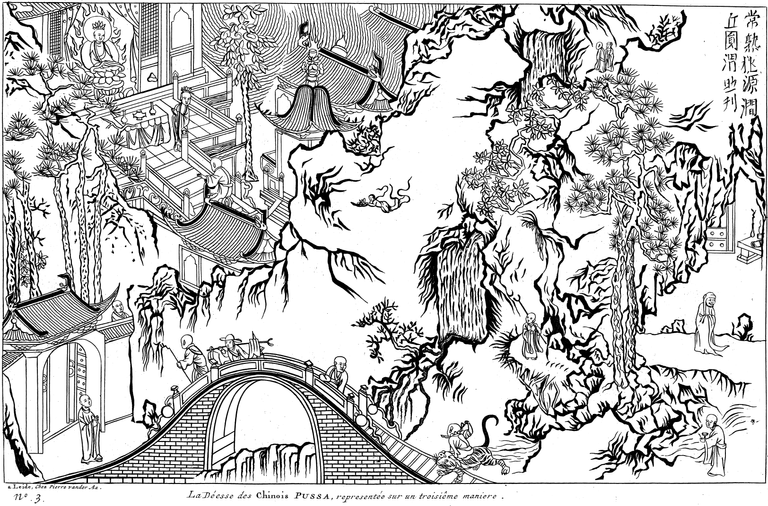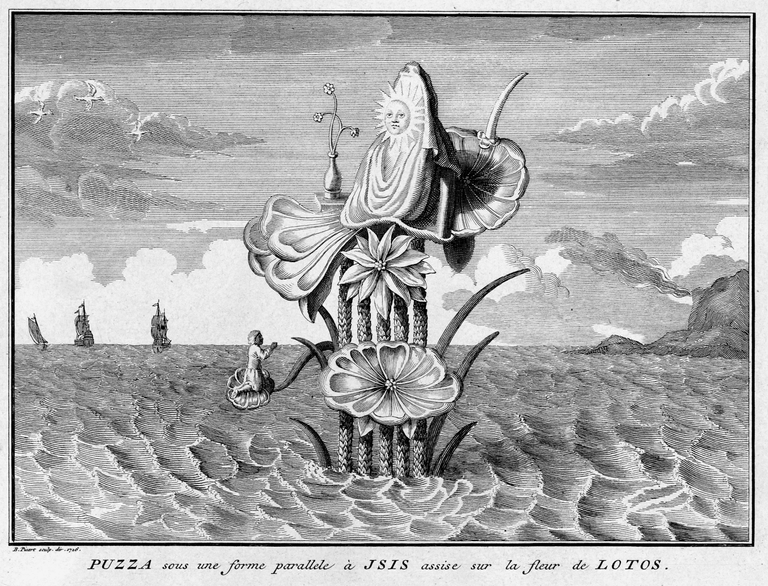
There is a story about Puzza that suggests she is a Water Nymph.
Puzza is a Chinese goddess who has some resemblance to Cybele and Isis of the Egyptians. [It is told that that] three genii of the female sex descended from their heavenly abode to enjoy a bath in an earthly stream. The water had scarcely touched their bodies when the most beautiful of them perceived on her garment a lotus plant, with blossoms and fruit, and could not imagine whence the plant had come. She could not resist the desire of tasting the fruit; but this was attended with evil consequences, for behold a little son was born from her at the same moment. She brought him up, and when he had reached the years of maturity she returned to heaven. This nymph was Puzza; and, as her offspring became a mighty ruler of the heavenly empire of China, she was worshiped as the queen of the world, the mother of all that is good, and the supporter of all that is living. Puzza is represented with eighteen arms, sitting on a flower, and her head surrounded with an aureole. Source: biblicalcyclopedia.com
Another bit of information which connects her to Guanyin:
Puzza or Pusa is the Chinese designation of a Bodhisattva, a Buddhist being who strives for enlightenment. Puzzas come in different guises, which have all distinctive features. This is most likely Guan Yin Pusa, because she is a female Bodhisattva. Source: dbnl.org
